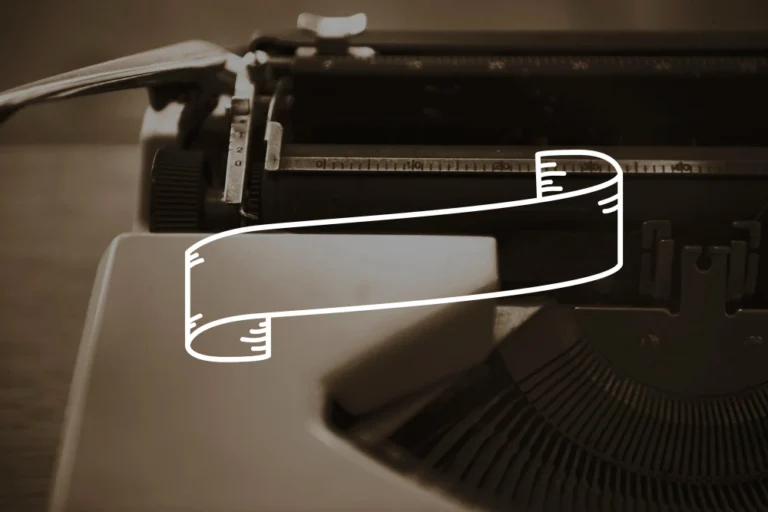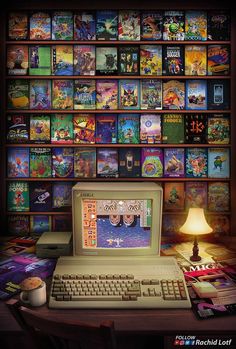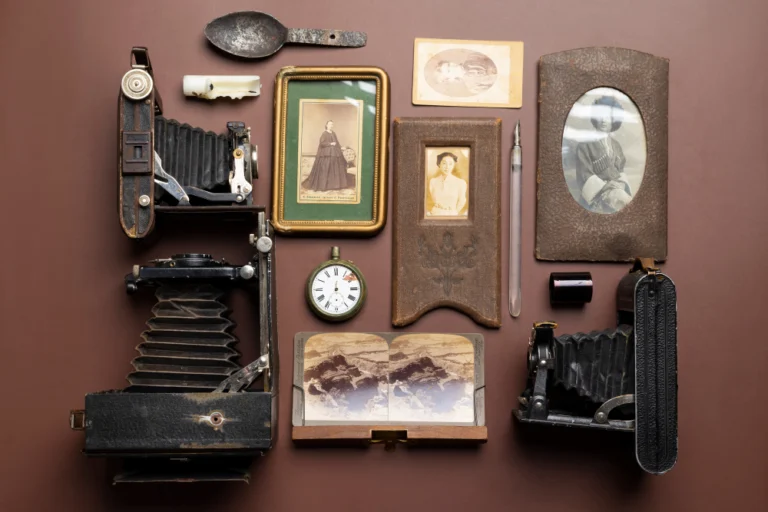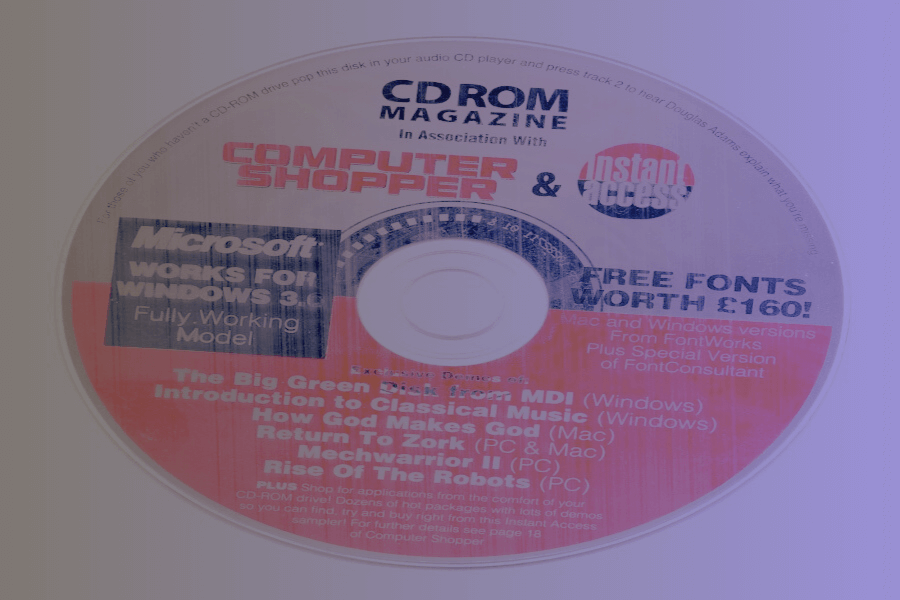
Take a trip back with me, perhaps to the late 90s or early 2000s, right here in Vadodara, or any town across India. You walk into the local computer shop or bookstall, scanning the magazine rack. Your eyes land on the latest issue of Digit, CHIP, or PCQuest. Before the age of app stores, high-speed downloads, and cloud-based software, there was a time when tech enthusiasts eagerly awaited the latest issue of their favorite computer magazine — not just for the articles, but for what came attached: computer magazine cover discs.
The cover story might be interesting, but your real target is the prize shrink-wrapped to the front: the cover CD, maybe even a DVD, shimmering with promise. Pocket money or savings clutched tight, you make the purchase and rush home. Carefully, you peel the disc from its cardboard sleeve, pop open the tray of the family’s assembled PC or that trusty Pentium II, and slide it in.
The familiar whirring and clicking starts. An autorun menu, often uniquely themed, springs to life, listing a treasure trove of software: game demos, utilities you never knew you needed, shareware applications, maybe even the latest drivers. For the next few hours, you are an explorer in a digital jungle, delivered right to your doorstep. This was the magic of the computer magazine cover disc.
The Floppy Files (Late 1980s – Early 1990s): “Shareware & Small Wonders”
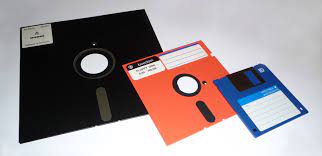
Before the dominance of CDs, the seeds of the cover-mounted software revolution were sown on more humble media. In the UK, pioneering 8-bit computer magazines like Your Sinclair started experimenting by attaching cassette tapes (“covertapes”) to their covers as early as the mid-1980s. These tapes often contained playable demos of upcoming games, programming utilities, or sometimes even full, exclusive games like Moley Christmas.
As technology progressed, the floppy disk – first the bendy 5.25-inch, then the more robust 3.5-inch – became the medium of choice. Magazines catering to platforms like the IBM PC, Amiga, and Atari ST began bundling floppies.
Given the limited capacity (1.44MB on a standard 3.5″ disk), the contents were necessarily small: shareware versions of applications, essential utilities (like file archivers or text editors), programming tutorials with source code, maybe a small game demo or type-in programs featured in the magazine’s pages.
In an era before widespread internet access, when downloading even a small program could take hours (if possible at all), these cover floppies were a valuable, tangible way to get new software into users’ hands.
Tech Spotlight: The Cover Floppy/Tape
- Media: Primarily 5.25-inch and 3.5-inch floppy disks; earlier experiments used cassette tapes for 8-bit home computers.
- Capacity: Very limited (e.g., 360KB to 1.44MB for floppies).
- Content: Shareware programs, small utilities, game demos, type-in program listings, drivers.
- Distribution: Physically attached to the magazine cover, often in a plastic sleeve or simple cardboard holder.
- Significance: Established the concept of bundling software with print magazines, providing early, easy access to digital tools and entertainment before the internet age.
Milestone Markers
- Mid-1980s: UK magazines like Your Sinclair begin attaching cover tapes with games/demos.
- Late 1980s/Early 1990s: Floppy disks (5.25″ and 3.5″) become common covermounts on various computer magazines globally. Magazines like Softdisk publish primarily on disk.
- Early 1990s: Cover floppies provide a key distribution channel for the burgeoning shareware software model.
Parallel Developments
- Late 1980s: 16-bit home computers (Amiga, Atari ST) and IBM PC compatibles gain popularity. MS-DOS is the dominant PC operating system.
- Early 1990s: Windows 3.0/3.1 starts popularizing graphical user interfaces on PCs. The shareware distribution model flourishes. Early dial-up BBSs and online services exist but are not mainstream.
User Experience Snapshot
Imagine the anticipation of sliding that floppy disk into the drive. Hearing the distinctive clunk-chugga-chugga sounds as the drive head sought data. Exploring the simple directory structure via DOS commands or early file managers. Discovering a neat little utility or a surprisingly fun shareware game felt like finding hidden treasure. It was a slow, tactile experience vastly different from today’s instant downloads.
Price Point Perspective
The cover floppy added value to the magazine’s cover price. While shareware was often “try before you buy,” getting it conveniently delivered on disk saved the hassle and potential cost of ordering via mail or downloading slowly via modem (if available). The magazine price often felt justified by this bundled software access.
What We Gained / What We Lost
- Gained: Early, easy access to software demos, utilities, and shareware. A tangible monthly dose of new digital content. A key distribution method pre-internet.
- Lost: Nothing – this was an additive feature, enhancing the value of print magazines.
Unexpected Consequences
- Helped popularize the shareware model, allowing small developers to reach a wide audience.
- Occasionally, viruses could inadvertently be spread via infected floppy disks, leading magazines to implement scanning procedures.
- Familiarized users with installing and exploring new software regularly.
Industry Voice
“It was dated January 1986: the first issue of Your Sinclair… and it held a cassette on its front cover… a demo of the Firebird game Rasputin… signified a very important beginning.” – Wizwords.net (Recalling the dawn of covermounts).
The CD-ROM Revolution (Mid-1990s – Early 2000s): “The 650MB Treasure Chest”
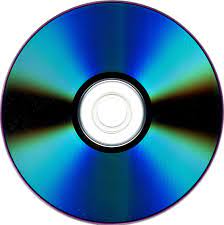
The arrival of the CD-ROM drive as a standard PC component in the mid-1990s utterly transformed the cover disc landscape. Suddenly, magazines weren’t limited to a megabyte or two; they had a staggering 650MB (or more) to play with. This capacity explosion turned the cover disc from a small bonus into a major, often primary, selling point.
This was the undisputed golden age. Cover CDs were bursting at the seams with content that would have been impossible to distribute easily otherwise. Iconic game demos were standard fare – getting the shareware episode of Doom or a demo of Quake, Settlers II, or Zork Nemesis from a magazine was a rite of passage for many gamers. But it went far beyond demos. Magazines often included:
- Full Software: Sometimes older versions of commercial programs (e.g., graphics software, office suites), “lite” editions, or full versions of previously released games.
- Massive Shareware Libraries: Huge collections of utilities, tools, and games categorized for easy Browse.
- Essential Drivers: Graphics card drivers, sound card drivers, printer drivers – absolutely vital in the pre-plug-and-play, pre-broadband era when finding the right driver online was a nightmare.
- Creative Assets: Collections of fonts, clip art, stock photos, website templates.
- Multimedia Content: Excerpts from multimedia encyclopedias (like Encarta), video clips, music samples.
In India, this era was particularly significant. With home internet access still developing and often slow/expensive, magazines like Digit, CHIP India, and PCQuest became indispensable.
Their cover CDs (and later DVDs) provided a crucial gateway to software, demos, tools, and drivers that were otherwise very difficult or costly to obtain.
For many Indian tech enthusiasts and students, buying the magazine was primarily about getting the disc. The curated collection was a monthly treasure hunt.
Tech Spotlight: The Cover CD-ROM
- Media: Compact Disc Read-Only Memory (CD-ROM).
- Capacity: Typically 650MB – 700MB.
- Content: Game demos, full software (older/lite versions), massive shareware collections, drivers, utilities, fonts, clip art, multimedia content, web design tools.
- Interface: Often featured custom autorun menus with categorized lists and descriptions of the software included.
- Significance: Revolutionized software distribution via magazines, offering vast amounts of content. Became a major driver of magazine sales and helped users discover a wide range of software and games before easy internet access. Crucial for software access in markets like India.
Milestone Markers
- Mid-1990s: CD-ROM drives become standard equipment on new PCs. Magazines rapidly transition from floppy disks to cover CDs.
- ~1995-2005: Peak era of cover CD popularity and importance. Magazines like PC Magazine, Computer Shopper, PC Format (UK), Digit, CHIP India, PCQuest heavily rely on cover CDs.
- Late 1990s: Cover CDs become instrumental in distributing shareware versions of blockbuster games (Doom, Quake).
Parallel Developments
- Mid-late 1990s: Windows 95/98 become standard OS. The internet boom accelerates. 3D accelerator cards revolutionize PC gaming. MP3 format emerges.
- Early 2000s: DVD drives begin to appear in PCs. Digital cameras become more common. Early broadband (DSL/Cable) starts replacing dial-up in some regions.
User Experience Snapshot
Do you remember the satisfying click of the CD tray closing? The anticipation as the disc spun up? Clicking through the often elaborate cover disc menus, exploring folders packed with intriguing file names? Installing that Age of Empires demo or a cool new screen saver utility? Finding the exact driver you needed after hours of searching? It felt like getting incredible value, a curated bundle of digital goodies delivered monthly.
In India, these discs were often shared among friends, amplifying their reach and value.
Price Point Perspective
The perceived value of the software on the cover CD often far exceeded the magazine’s price (e.g., ₹100-₹150 for a magazine + CD/DVD in India). This made the purchase highly compelling, especially compared to buying software individually or spending hours on slow dial-up downloads (if feasible). The magazine became the affordable gateway to a world of software.
What We Gained / What We Lost
- Gained: Unprecedented access to a vast range of software, demos, and drivers. A powerful discovery mechanism for new tools and games. Huge perceived value justifying magazine purchases. Essential resource in regions with limited internet access.
- Lost: The simplicity of the floppy era (CDs could sometimes be overwhelming!). Increased potential for scratched/unreadable discs.
Unexpected Consequences
- Helped rapidly drive the adoption of CD-ROM drives as essential PC peripherals.
- Made software demos a standard part of game marketing strategies.
- Created a generation of users accustomed to exploring and trying out diverse software from curated collections.
- Risk of viruses remained, sometimes causing widespread issues if a master disc was infected before duplication (e.g., Marburg virus incidents in 1998).
Industry Voice
“I had chip, PC world, PC quest etc, DVDs from 1995 to almost 2003. I used to buy almost every month!! … The best part of their CDs were the game demos. This was before broadband connections !!” – Reddit user nandu_sabka_bandhoo (Recalling the Indian cover disc experience).
The DVD Expansion (Early 2000s – Late 2000s): “More Megabytes, More Magic”
Just as the CD-ROM had revolutionized the cover disc, the arrival of DVD-ROM drives in consumer PCs during the early 2000s offered another significant leap in capacity. A standard single-layer DVD could hold 4.7GB – over seven times the data of a CD. Dual-layer DVDs pushed this even further to 8.5GB.
Magazines, especially those focused on gaming or multimedia, eagerly adopted the DVD format. This massive space allowed for even more ambitious content:
- Larger Game Demos: Demos for increasingly complex 3D games could now be included without heavy compression.
- Full Games: It became more common to see full versions of slightly older, but still popular, commercial games included as covermounts.
- Software Suites: Comprehensive collections of utilities, creative tools, or even full operating systems (like various Linux distributions) could be bundled.
- Video Content: High-quality video tutorials, developer interviews, movie trailers, and extensive gameplay footage became feasible additions.
In India, publications like Digit became famous for their dual-layer DVDs, packed to the brim with an eclectic mix of software, tools, videos, and resources, continuing the tradition of being an essential buy for tech enthusiasts starved for bandwidth or affordable software access. This era represented the peak of physical media capacity being leveraged by magazines.
Tech Spotlight: The Cover DVD-ROM
- Media: Digital Versatile Disc Read-Only Memory (DVD-ROM), single or dual-layer.
- Capacity: 4.7GB (single layer) to 8.5GB (dual layer).
- Content: Larger game demos, full older commercial games, full Linux distributions, large software suites, video tutorials, movie trailers, extensive resource libraries.
- Interface: Similar custom autorun menus as CDs, but often with more multimedia elements due to increased capacity.
- Significance: Offered maximum capacity for physical covermounts, enabling distribution of larger software and video content before broadband became truly ubiquitous. Continued the vital role of providing software access in markets like India.
Milestone Markers
- Early 2000s: DVD-ROM drives start becoming standard in new PCs, gradually replacing CD-ROM drives.
- Mid-2000s: Many computer and gaming magazines transition from cover CDs to cover DVDs.
- ~2005-2008: Peak era for cover DVDs, offering enormous value propositions, especially with dual-layer discs. Digit magazine in India known for its packed dual-layer DVDs.
Parallel Developments
- Early-Mid 2000s: Broadband internet adoption continues to grow, but speeds and availability still vary greatly, especially globally. YouTube launches (2005).
- Mid-2000s: Next-generation consoles (Xbox 360, PS3) launch, using DVD or Blu-ray media. PC games become larger and more graphically demanding.
User Experience Snapshot
Finding a full, well-regarded game from a year or two prior on a cover DVD felt like hitting the jackpot. The sheer volume of software, tools, and videos available on a single disc was often staggering. Installing a Linux distribution directly from a magazine DVD to experiment with it was a gateway for many. The DVD era amplified the “treasure chest” feeling of the CD era – there was simply more of everything.
Price Point Perspective
Magazines with cover DVDs often commanded a slightly higher price than those with CDs or no discs, but the perceived value of the gigabytes of bundled content generally made it worthwhile for consumers, especially those without fast internet.
What We Gained / What We Lost
- Gained: Ability to distribute much larger software files, including full games and high-quality video, via physical media. Maximum value proposition from covermounts.
- Lost: CDs started feeling slightly less exciting in comparison. The reliance on physical media was nearing its end.
Unexpected Consequences
- Further cemented the expectation among readers that computer magazines should come bundled with significant digital content.
- Provided an easy way for users to try out different Linux distributions without complex downloads or installations.
Industry Voice
“Digit used to share pdf copies of all their magazines on the DVD of last issue of every year.” – Reddit user sporky2020 (Highlighting the archival value some magazines provided on their discs).
The Broadband Sunset (Late 2000s – Early 2010s): “The Download Decade Dawns”
The reign of the cover disc, mighty as it was, couldn’t withstand the relentless march of technology. The late 2000s and early 2010s witnessed the rapid rise of affordable, high-speed broadband internet access across the globe, including significantly improved speeds and accessibility in India. This fundamentally eroded the core reason for the cover disc’s existence.
Why wait a month for a magazine to get game demos or software trials when you could download them directly from the developer’s website in minutes? Why rely on a disc for drivers when Windows Update or manufacturer sites offered the latest versions instantly? Digital distribution platforms, spearheaded by Steam for PC games (launched 2003, but gaining massive traction in this period), revolutionized software purchasing and delivery, making physical media feel cumbersome.
Software developers shifted to offering free trials directly online. Shareware faded as freemium and direct digital sales models took over. Simultaneously, the print magazine industry faced its own existential challenges from online media, leading to declining circulations and budget cuts.
Producing and distributing millions of physical discs became an increasingly unjustifiable expense for publishers when their readers could get the same (or better, more up-to-date) content online, faster and more easily.
Microsoft’s decision around 2003 to restrict the distribution of its patches and service packs on cover discs, pushing users towards Windows Update or direct downloads, also signaled a shift in vendor attitudes. The utility of the cover disc dwindled rapidly.
Tech Spotlight: Broadband Internet & Digital Distribution
- Technology: Widespread adoption of high-speed broadband internet (DSL, Cable, early Fiber). Rise of digital distribution platforms (Steam, publisher websites, later App Stores). Cloud storage begins to emerge.
- Impact: Made downloading large software files (demos, trials, full games, drivers, utilities) fast and convenient. Eliminated the need for physical media for software distribution and updates. Allowed direct-to-consumer software sales and trials.
- Significance: Directly rendered the primary function of the cover disc (distributing large digital files offline) obsolete for a vast majority of users. Led to the rapid decline and eventual disappearance of cover discs from most magazines.
Milestone Markers
- 2003: Steam platform launches for PC games.
- Mid-late 2000s: Broadband penetration reaches critical mass in many developed countries and grows rapidly in developing markets like India. YouTube normalizes streaming video.
- Late 2000s: Digital game sales start significantly impacting physical retail. Websites become the primary source for drivers and software updates.
- ~2010-2015: Most major computer and gaming magazines cease including cover discs due to declining relevance and cost.
Parallel Developments
- Late 2000s: Rise of social media (Facebook, Twitter). Launch of iPhone (2007) and Android (2008) kickstarts the mobile app ecosystem and App Stores.
- Early 2010s: Cloud computing becomes mainstream. Streaming services (Netflix) gain popularity. Print media advertising revenue plummets.
User Experience Snapshot
Remember the first time you downloaded a multi-gigabyte game demo over broadband in under an hour, instead of waiting for next month’s magazine DVD? Or effortlessly finding the latest graphics driver on Nvidia’s or AMD’s website? The convenience was undeniable. Suddenly, the cover disc felt slow, outdated, and limited. While perhaps less exciting than the monthly “treasure chest,” direct downloading was simply more efficient.
Price Point Perspective
Broadband internet, while a monthly expense, offered far more value for accessing software and content than buying multiple magazines primarily for their discs. Free online trials replaced paid access via magazine cover price. Digital game sales often featured deep discounts unavailable with physical media.
What We Gained / What We Lost
- Gained: Instant access to demos, trials, drivers, and software updates via downloads. Convenience of digital distribution platforms. Access to a wider range of software than curated discs could offer.
- Lost: The curated discovery experience of cover discs. The tangible monthly “treat.” A vital resource for those who remained without affordable broadband. The specific value proposition of many computer magazines.
Unexpected Consequences
- Accelerated the decline of print computer magazines, as a major value driver disappeared.
- Pushed software developers entirely towards online marketing and distribution models (demos, trials, digital sales).
- Created a need for large digital archives to preserve the content that was once readily available on discs.
Industry Voice
“Microsoft US has banned the inclusion of any of its code on magazine discs. Presumably, the company assumes we all have broadband to download up to 166MB for DirectX 9b…” – PC Pro Magazine Editor (James Morris, 2003, reflecting on changing vendor policies).
The Digital Echo (Mid-2010s – Present): “Archived & Adored”
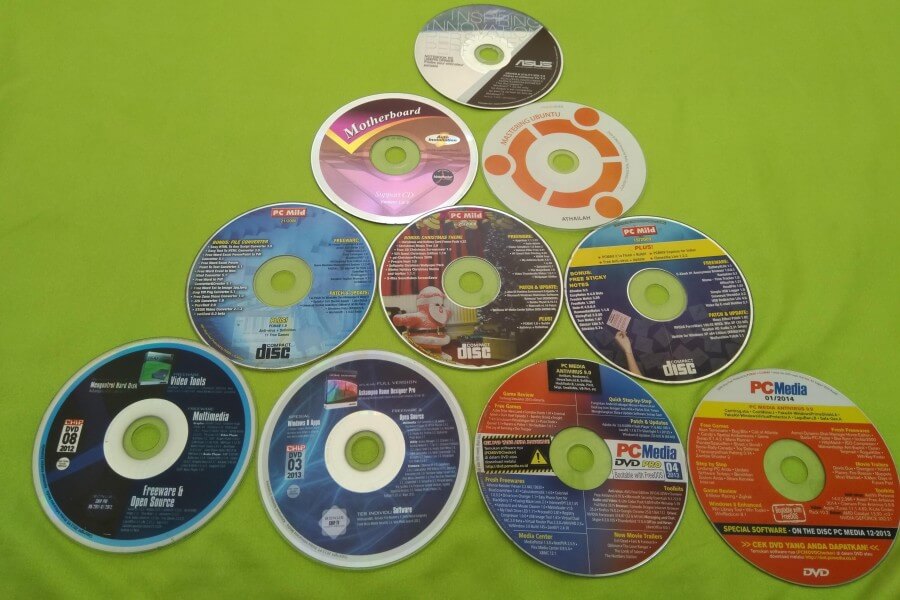
Today, the computer magazine cover disc is essentially extinct on mainstream newsstands. The technological tide of fast internet and digital distribution washed it away. Finding a magazine with a bundled CD or DVD now is a rare novelty, perhaps a special edition or a niche publication catering to a specific retro interest.
But the cover disc era hasn’t been forgotten. For those who grew up eagerly awaiting that monthly infusion of digital content, it holds a powerful nostalgic appeal. It represents a time of slower technology, deliberate discovery, and the simple joy of exploring a curated collection of software. It was a unique bridge between the physical world of print and the burgeoning digital realm.
Thankfully, this legacy is being preserved. Dedicated online communities and, most notably, the Internet Archive are actively collecting, imaging, and archiving thousands of magazine cover discs (and earlier disk magazines) from around the world.
These digital archives allow us to browse the contents of these historical discs, explore their unique menu interfaces, and rediscover the demos, utilities, and shareware gems that filled our hard drives decades ago. The cover disc may be gone from our mailboxes, but its echo resonates online, a testament to a fascinating and fondly remembered chapter in personal computing history.
Tech Spotlight: Digital Archives (Internet Archive)
- Platform: Online digital libraries like the Internet Archive (archive.org).
- Content: Vast collections of disk images (.iso, .img, etc.) from magazine cover discs (CDs, DVDs) and earlier disk magazines (floppies). Includes discs from various countries and platforms.
- Accessibility: Freely browsable and downloadable, allowing users to explore historical software collections using emulators or virtual machines.
- Significance: Preserves the content and context of the cover disc era, making this historically important software distribution method accessible for research, nostalgia, and exploration.
Milestone Markers
- Mid-2010s: Cover discs largely disappear from major publications worldwide.
- Ongoing: Internet Archive and retro computing communities continue to expand their collections of digitized cover discs and related media.
- Present: Strong nostalgic sentiment for the cover disc era persists among tech enthusiasts who experienced it.
Parallel Developments
- Mid-2010s onward: Cloud storage becomes ubiquitous. Software subscriptions (SaaS) become common. Physical media sales for PC software become negligible. Mobile apps dominate consumer software interaction for many.
User Experience Snapshot
Browse the cover disc section on the Internet Archive feels like stepping into a digital museum. You can download an ISO image of a PCQuest DVD from 2005, mount it, and see the exact menu and software selection that readers enjoyed back then. It’s a powerful hit of nostalgia and a fascinating way to explore the software landscape of a bygone era.
Price Point Perspective
Accessing these archives is typically free, driven by non-profit initiatives and community efforts. The value is historical and cultural, rather than monetary.
What We Gained / What We Lost
- Gained: Preservation of a significant part of computing history. Ability to digitally revisit and explore the content of the cover disc era. Appreciation for the curation and discovery process of the time.
- Lost: The physical experience and anticipation of receiving and exploring a new disc each month.
Unexpected Consequences
- Digital archives have become invaluable resources for understanding software history, retro gaming, and the evolution of digital distribution.
- Nostalgia for cover discs fuels interest in retro computing and emulation.
Industry Voice
“As it happens, I still have a bunch of those CDs and DVDs from Indian mags. Chip India, IT Magazine, probably some more even I’ve forgotten.” – Reddit user pthbrk (Illustrating the personal collections and enduring memory of these discs).
Full Circle Reflections
The journey of the computer magazine cover disc mirrors the trajectory of personal computing itself – from niche hobbyist experiments to mass-market multimedia, and finally, displacement by the sheer speed and convenience of the internet. Born out of necessity in an era of limited connectivity and expensive software, the cover disc brilliantly solved the distribution challenge, delivering digital worlds on silver platters (or plastic squares before them).
For nearly two decades, these discs were eagerly anticipated treasure chests, gateways to new games, essential tools, and endless hours of exploration. They democratized access to software, particularly in regions like India where bandwidth was scarce and expensive.
They were a defining feature of the print tech media landscape, a tangible connection to the rapidly evolving digital world.
While broadband and downloads ultimately rendered them obsolete, the cover disc era holds a special place in the hearts of many tech enthusiasts. It was a time of curated discovery, shared experiences (passing discs among friends!), and the simple, tactile joy of getting a physical piece of the digital revolution delivered monthly.
Thanks to digital archives, this lost world isn’t entirely lost, allowing us to revisit the Cover Disc Cache and appreciate its unique role in tech history.
The Heritage Impact: Shaping Digital Culture
The cover disc era left a lasting legacy:
- Software Distribution: Pioneered mass distribution of demos, shareware, and utilities, shaping marketing strategies.
- Hardware Adoption: Helped drive the adoption of CD-ROM and DVD-ROM drives as standard PC components.
- Digital Literacy: Encouraged users to install, explore, and experiment with a wide variety of software.
- Gaming Culture: Made game demos a standard expectation and fueled LAN party culture.
- Bridging the Divide: Provided essential software access in areas with limited internet connectivity.
- Tech Media: Defined the value proposition of computer magazines for a significant period.
- Preservation: Created a rich, tangible archive of software from a specific historical window, now being preserved digitally.
The humble cover disc, though now a relic, played an undeniable role in bringing the digital world to the masses, one shiny platter at a time.
FAQ: Cover Discs – The Lost Treasures
- When did computer magazines start including cover discs?
Early experiments began in the 1980s with cover tapes (cassettes) and floppy disks (5.25″ and 3.5″) on magazines like Your Sinclair. Cover CDs became widespread in the mid-1990s as CD-ROM drives became common PC equipment, and DVDs followed in the early 2000s. - Why were cover discs so popular?
Before widespread fast internet, they were the easiest and often cheapest way to get software. They offered game demos, useful utilities, drivers (which were hard to find online), shareware, and sometimes even full versions of older software, providing huge value for the magazine’s price. - What kind of software was typically found on cover discs?
Content varied but commonly included: video game demos, shareware/freeware utilities, drivers for hardware, collections of fonts and clip art, browser plug-ins, software trials, full versions of older software or “lite” editions, multimedia samples, and later, Linux distributions and video tutorials. - Why did magazines stop including cover discs?
The main reason was the rise of affordable, high-speed broadband internet, which made downloading software quick and easy. Digital distribution platforms (like Steam), official websites offering direct downloads/trials, and the general decline of print media circulation made cover discs less necessary for users and less economically viable for publishers. - Where can I find content from old cover discs today?
The best resource is the Internet Archive (archive.org), which has large collections of digitized cover discs (CDs, DVDs, and earlier floppies) from various magazines worldwide that you can browse and download. Retro computing forums and community sites also often discuss and share information about specific cover disc contents.
